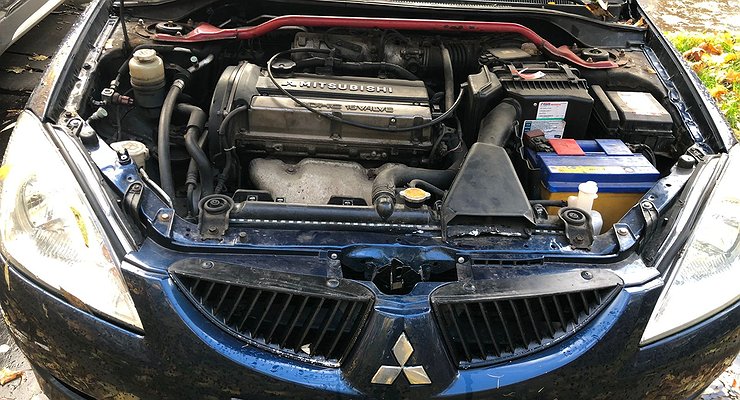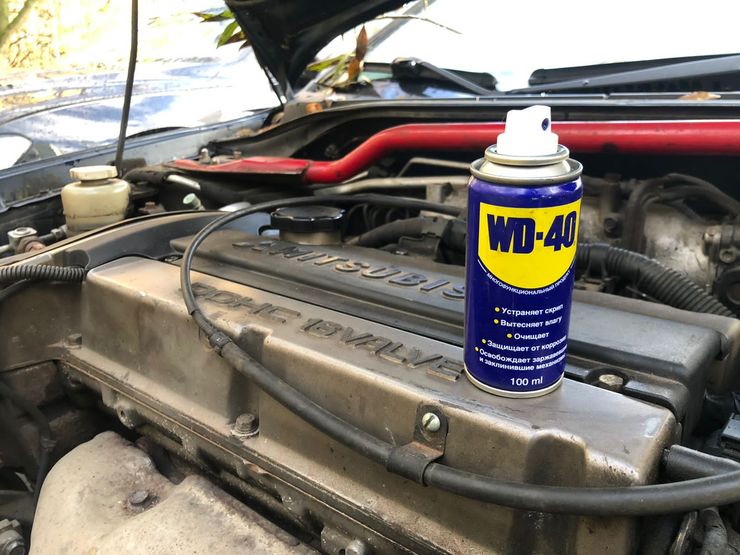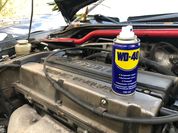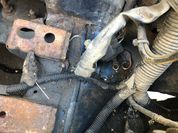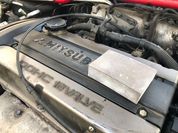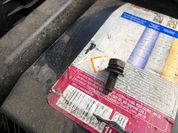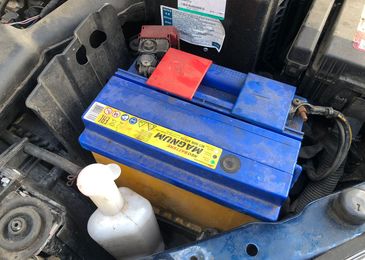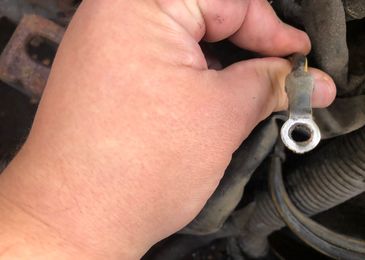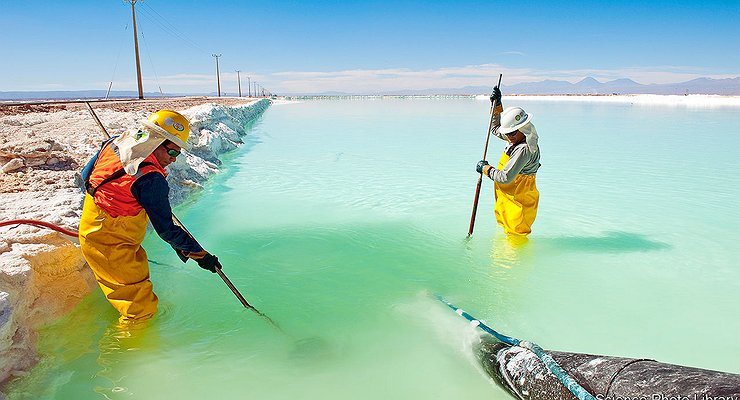Specifically, in our case, nothing was needed to diagnose and unscrew it: a thick layer of dirt covered both the screw itself and the thread, there was water, under which a deeply oxidized contact was hidden. We have no more questions, we move on to the recovery procedures.
After clearing the place of deposits, we preemptively fill in WD-40 and unscrew the mass fixing bolt without damage: what kind of mixtures are there and what kind of magic do the Japanese use for their hardware – a sacrament, but even after almost two decades in Moscow salt, the screw did not rot, did not stick and did not fall apart. Miracle, nothing else.
After washing and brushing the wires and the screw, we go to the terminal itself. It is rusted and oxidized, no special composition will help here, so we clean the traces of corrosion with a fine sandpaper on the metal and reassemble it. There is an opinion on the Internet that the bodywork under the terminal should be cleaned to the bare metal, but this is not done “in the factory”. The Japanese engineer knows better, so we assemble it “as it was” and make sure to fill it with a special mixture for the terminals on top, which will prevent the appearance of oxides and corrosion in the future.







